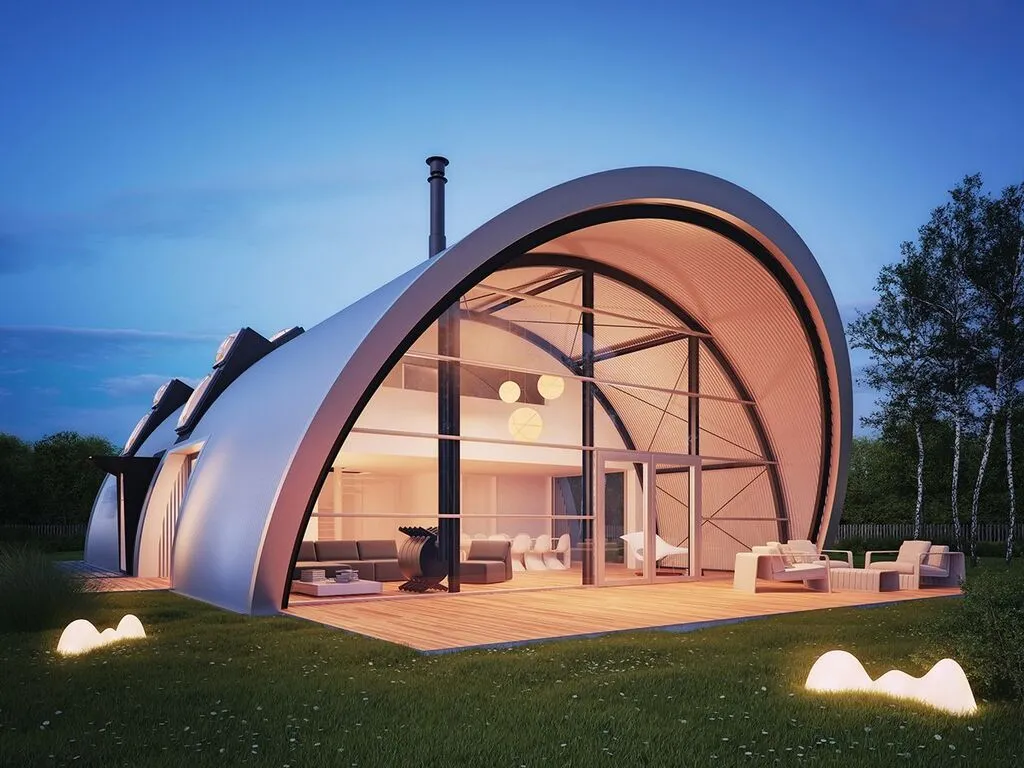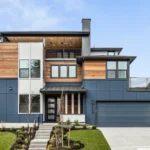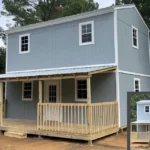Quonset homes are quickly becoming the go-to solution for modern homeowners looking to combine minimalist aesthetics with structural strength and environmental sustainability. Originally used as military structures during World War II, these iconic semicircular steel huts are now being reimagined into cutting-edge residential homes. With innovations in architecture and construction, modern Quonset-style homes offer a unique blend of rugged durability and contemporary design.

Content
The Rise of Quonset-Style Architecture
Designed for fast assembly and low-cost construction, Quonset-style homes have gained attention in recent years for their versatility. Their arched structure isn’t just eye-catching—it’s incredibly strong, weather-resistant, and energy-efficient. This type of steel Quonset hut home is now viewed as a canvas for creative architects and homeowners seeking something bold and unconventional.

The combination of modern materials and open-plan living has allowed Quonset homes to evolve far beyond their industrial beginnings. Today, they are used not only as vacation cabins or storage units but as fully functioning, beautifully designed homes.
Innovative Design Meets Functionality
What makes modern Quonset-style steel homes stand out is their ability to merge form and function seamlessly. The curved structure provides more internal space than traditional square homes, while still being easier to construct. The latest designs focus on maximizing natural light, open layouts, and energy efficiency.

Architects often utilize steel frames paired with glass facades, skylights, and minimalist interiors. This approach creates airy, spacious environments that feel much larger than they appear from the outside. These innovative Quonset hut™ homes are often modular, allowing homeowners to expand or modify them over time.
A Sustainable Housing Option
As sustainability becomes more critical in homebuilding, steel Quonset homes present a compelling eco-friendly solution. Steel is 100% recyclable, and many manufacturers now offer recycled steel options. Moreover, the prefabricated nature of these structures reduces construction waste and speeds up the building process.
Because of their naturally aerodynamic shape, these homes are also energy efficient. The curved roof helps snow and rain slide off easily while minimizing wind resistance—an ideal solution for harsh climates. Combined with insulation and renewable energy sources like solar panels, Quonset-style homes can achieve impressive energy performance ratings.
Design Possibilities: From Rustic to Ultra-Modern
One of the biggest surprises for people discovering modern Quonset hut homes is just how stylish they can be. While their exterior maintains the recognizable arch, the interiors can be completely customized. Whether you’re going for a rustic cabin-in-the-woods look or a minimalist urban loft vibe, the interior design can be tailored to your exact taste.
Some designs feature polished concrete floors, floating staircases, and high-end appliances. Others take a more organic approach, using reclaimed wood, natural stone, and passive heating and cooling systems. The possibilities are endless when it comes to the interior layout and finishes.
Cost-Efficiency and Quick Assembly
One of the key advantages of a Quonset-style steel hut home is its affordability. Compared to traditional construction, these homes are far less labor-intensive. Kits are often available that come pre-measured and ready for quick assembly, sometimes completed in just a few days with a small crew.
These cost-effective structures can help homeowners save money without compromising on aesthetics or durability. Whether it’s a full-time residence, vacation retreat, or guesthouse, steel Quonset hut homes provide an economical path to homeownership.
How Architects Are Elevating Quonset Living
Top architecture firms have begun exploring the Quonset form as a legitimate platform for innovation. Rather than hiding the arched structure, many designers now choose to highlight it. Curved walls are embraced rather than hidden, and exposed steel becomes part of the visual language.
Incorporating biophilic design principles, modern Quonset homes often feature green roofs, indoor gardens, and natural ventilation. Some even include rooftop decks or courtyards within the arch, creating private outdoor spaces nestled within the structure. These creative interpretations transform utilitarian roots into sophisticated living environments.
Real-World Examples and Creative Uses
Across North America and beyond, innovative Quonset-style steel homes are popping up in unexpected places. From off-grid retreats in the mountains to sleek city dwellings, the form has proven its flexibility. Some homeowners have even combined multiple Quonset structures together to create multi-wing layouts, separating living areas from bedrooms or studios.
In desert climates, the reflective properties of steel help maintain interior temperatures. In cold areas, the tight seal and aerodynamic profile reduce energy costs. Whether placed on a rugged cliff or a suburban plot, Quonset-style homes adapt with ease.
Challenges and Considerations
While there are many advantages to choosing a Quonset-style home, potential homeowners should be aware of certain challenges. Curved walls can make furniture placement tricky and limit upper storage space. That said, many interior designers have found creative ways around this, using custom cabinetry and built-in shelving to make the most of the unique space.
Another consideration is zoning and building codes. While many areas allow steel Quonset construction, it’s important to check with local authorities. Fortunately, the growing popularity of steel Quonset homes means more municipalities are becoming familiar with the style and are approving permits more readily.
Who Should Consider a Quonset Home?
If you’re a fan of minimalist living, sustainable design, or just want something different from the average suburban home, a Quonset-style home might be perfect for you. These homes cater to creatives, adventurers, and anyone who values function and form equally.
They’re also ideal for DIY enthusiasts. Many home kits are available with detailed instructions, allowing ambitious homeowners to take on the project themselves or with minimal professional help.
Conclusion: A Bold New Chapter in Residential Design
Quonset homes are no longer just for industrial use or temporary housing—they represent a bold shift in how we think about home design. Their combination of durability, affordability, and aesthetic potential makes them one of the most exciting trends in modern architecture.
With more architects embracing the form and materials becoming more customizable, the future looks bright for these iconic structures. Whether you’re looking for a permanent residence or a unique vacation home, modern Quonset-style steel homes offer a compelling, forward-thinking alternative to traditional housing.
FAQs
Are Quonset homes energy-efficient?
Yes, Quonset homes are energy-efficient due to their aerodynamic shape, insulation options, and compatibility with solar and green technologies.
How much does it cost to build a Quonset-style home?
Costs vary, but Quonset homes are generally more affordable than traditional homes, with kits starting around $10,000 to $35,000 depending on size and features.

Elena Mohr is a dedicated home blogger who has been blogging for over six years. She covers everything home related. Elena also loves writing posts about her travels to Europe with her husband and two children.





